The illustrations below are by early twentieth century illustrator Dugald Stewart Walker. Though they were drawn to illustrate Hans Christian Anderson fairy tales, for each of the pictures below Walker wrote his own additional text/gloss. These short short stories are included below the pictures.
Fairy children are never bad until their second teeth come; and no one knows they are bad then except their mother. She thinks it very pretty, but of course she pretends she doesn’t. if she had a corner she would stand them in it, but as she hasn’t, she takes her naughty child’s chin in her hand, very gently, and she says: “Child, you have lost your nose. Go look for it at once. And if you don’t stick you finger in the hole where your nose used to be, before you find it, you will find a pot of gold at the same time.” Now fairies, you know, never think; for if they did they would see they could not use a pot of gold if they found one. So before they stop to think, off sails each naughty fairy up into the air to look for its nose with its hands for oars, so that it can’t stick its fingers into the hole where its nose used to be. And fanning its wings, it sails straight up into the air, and on still wings drifts down again — and up and down again it sails, looking all over the sky for its nose, which is another proof that it doesn’t think, for what, pray, should its nose be doing there? Until by and by it forgets all about the pot of gold and forgets it is using its hands for oars. And then! Well, of course, you know what it does at once. Just what you did with your tongue when you lost your tooth.
The merchant’s son told the king’s daughter about the storks which bring little children up out of the river. But, of course, they weren’t in the river in the first place. They come from away up behind the stars, where the Spring comes from. And up theres, sits One (I can’t remember much about her, only that she made me think of a dewdrop — not such a dewdrop as you and I can see, but a dewdrop if it were as large as the whole world) and all the children are in her lap. And each one has a little harness made of ribbon. And there are faun babies, and fairy babies, and human babies. The faun’s harness is purple like grapes, and the fairies’ is silver like bubbles in moonlight, and the human babies’ is just pink and blue; and that’s how the stork knows which is which. Now, the storks fly up there (it’s wonderful, the distance storks can fly) and each one takes a baby in his beak by the loop at the top of the harness. And down he starts, and all the way down the baby practices kicking. But before they start, the One who is like a dewdrop would be if it were as large as the whole world, gives to each baby a dandelion. And she says, “When you reach the lowest circle of stars this dandelion will have gone to seed. Then you must blow on it and see what time you will be born.” So when they come to the lowest circle of stars, puff! puff! blow all the babies on the dandelions which have gone to seed, to see when they will be born. But the down of the dandelion sometimes gets into the storks eyes, and as they haven’t any memory to speak of, they make sad mistakes in the places they leave the babies. Sometimes fairies are left with human beings, and sometimes even fauns — though of that I am not quite sure.
Mathew, Mark, Luke and John,
Bless the bed that I lie on.
There was a bed with four posts and a boy named Robin slept in it. Long ago he grew too big to sleep in that bed. And since the new bed he slept in had no posts, he thought there were no saints. But some kind of saints one must have, of course. And one day he saw a glass bowl with four goldfish and he took it home and put it by his new bed, and he called the goldfish Matthew, Mark, Luke, and John. But he did not think that he was calling them after the saints, only after the four posts he was used to in his old bed. One Spring day this grown up boy’s four goldfish died. Many years afterward, as I sat and painted the picture of the angel who came to take little Karen to heaven — the angel who touched the air with a green branch and filled it everywhere with stars — this Robin said to me: “Oh, little Karen’s bed is like my old one with the four posts, Matthew, Mark, Lukd and John. Have your angel put a gold halo around each post in memory of my four fish.
For he that has his own world,
Has many worlds more.
A boy called Robin once upon a time asked me to tell him all I knew of the fairies and I told him all I had learned from them. Then he asked: “How did the angel of the flower in this picture get the lovely blue spots that are on his legs and wings?” I showed him a cornflower growing out of a zigzag crack in a garden path that was spotted with sunshine as it came sifting through the branches of a cedar tree. In the tree many birds slept at night. One night six seeds of a cornflower were dropped by a goldfinch out of this tree as he was eating them. The fairy was sleeping under the cedar tree and they fell upon his wings and legs. Just then his mother came along and saw them. Admiring the effect, she whipped out her needle and thread and sewed them on at once so that he might wear them all the time.
On the river that flows by the little thatched house the fairies have water-lilies growing under the branches of the cherry trees that hang out over the water. The lily-pads catch the cherries that would otherwise fall and be lost. For cherries are the most delightful food for fairies, and all other irresponsible creatures. When those fairies that are transparent have eaten cherries, their stomachs get red outside as well as in. Then they tilt their noses higher than it is safe for human beings to tilt theirs, because they have weights in their heels. When they have stuffed themselves as round as marbles, they say, “Cherries are good for the wholesome.” No one but a fairy knows where this organ is located, and I fancy they only pretend they have on, to excuse their greediness.
Fairies say: “to play that you are doing something is as nice as doing it. They have a play called L’Envoi, that is quite the nices of all plays, that is, if you are a fairy. One has a flower whose blooms hand from the stalk like little bells, the others follow in a line that flutters from onse side to the other. The leader holds her flower high and calls, “L’Envoi! L’Envoi! L’Envoi!” And whichever side she dips the little bells in, the fairies march in that direction. After they have marched several inches, they lie down and quickly jump up again. Then the leader goes to the end of the line, and the next one becomes leader, then the third, then the fourth, and so on until each fairy has been the leader once. It sounds very stupid, but if you are a fairy, it is the most delightful play int he whole world. If only human beings weren’t so dignified, there are many delightful things they could learn from the fairies. L’Envoi. L’Envoi!
This is a picture of a father stork hastening to tell Mrs. Stork the upsetting scandal. Look closely and you will see fairies sleeping on the waterlily-pads. They never sleep except when they have danced their hands hot — which is very seldom. Then, with a little wince, they stick their hands under a frog’s stomach to keep them cool, just as on cold winter nights we stick our hands under the pillows to keep them warm.
The dragon who posed for this picture had no name; the wiggly thing that grows on his back from his head to his tail is his comb. It wiggled so while he was posing that the fairies discovered that it would make a delightful doormat. If one stood on it only for a second it wiggled all the mud off his feet and so they game him a name. It was Diplo-door-mat. He rather like this name, for all his life he had been called just Dragon, which made him feel as though he were in the insurance business and sat on a high stool and wrote in a big book all day.
Instead of second teeth the birds get second feathers, and because they are friends with the fairies they can feather oftener than we can get new teeth. When the feathering time comes the birds have no grown-ups to tie strings to their feathers and pull them out, as they do our teeth, so the fairies pull those that are stubborn and will not fall out. Here stands a gay and debonair creature who pulled the stubborn feathers from the peacock’s tail. He left one feather which forms a magic circle. This is a wish of good fortune from the fairies to you. This creature is not conceited, though he looks so. He belongs to the tribe of fairies who eat worms and has just eaten two. That is what gives his stomach its arrogant tilt, and it is in utter defiance of no one at all that he says airily: “The book is finished. I don’t care; I’ll do another!”
I’ve also scanned a handful of other Walker pictures from the same volume. No text for these — just the art.
If you’d like to know more about Walker, I’ve written a short bio of him for Wikipedia You can see a bit more of his art at the site that introduced him to me.
If there’s a lot of interest, I could maybe scan some more Walker illustrations — and I’ve got some great Arthur Rackham silhouette drawings I was thinking of uploading as well. What do you all think? More golden age illustration? Or should I just stick to the cranky criticism?

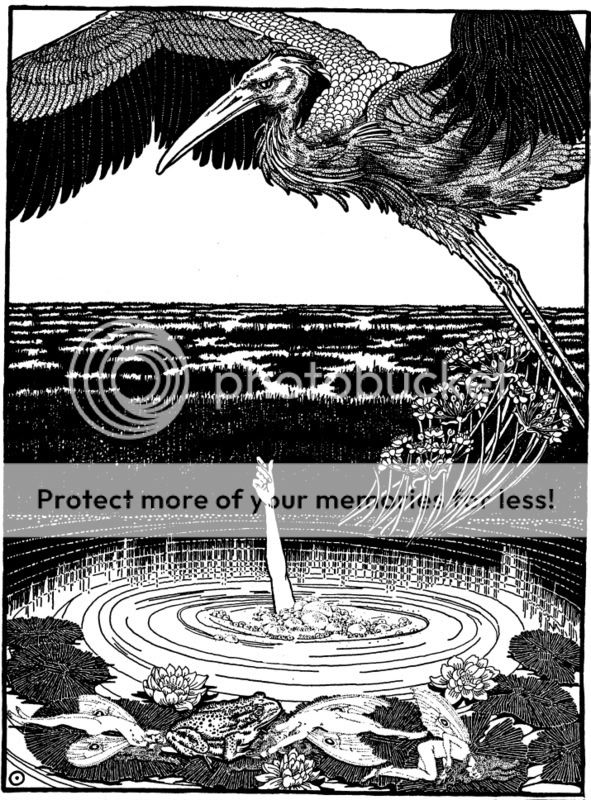
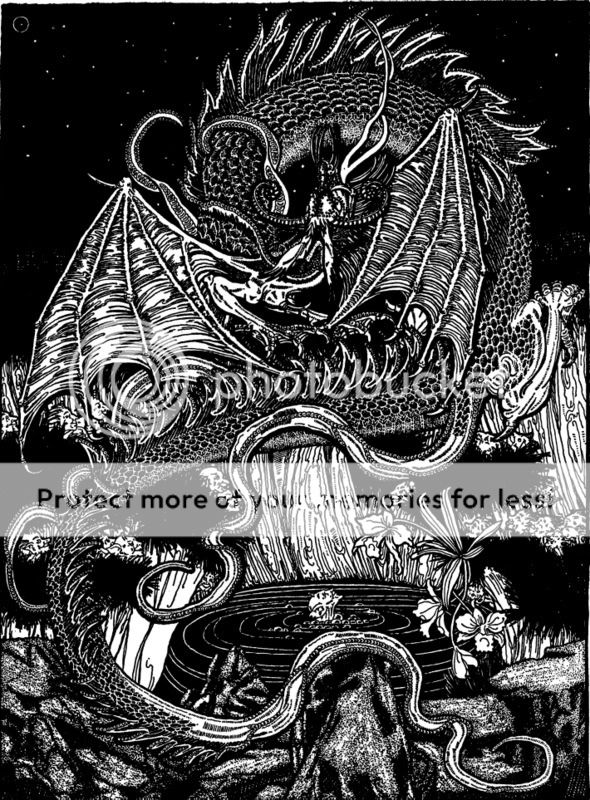
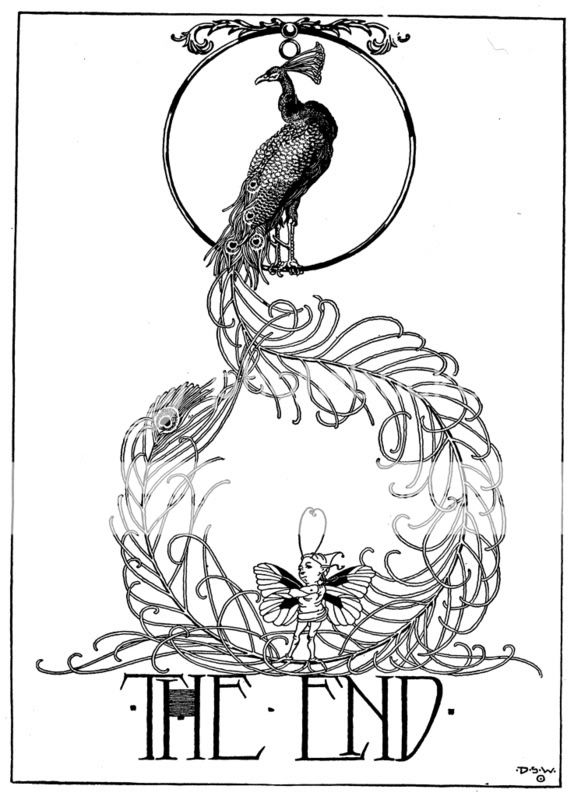
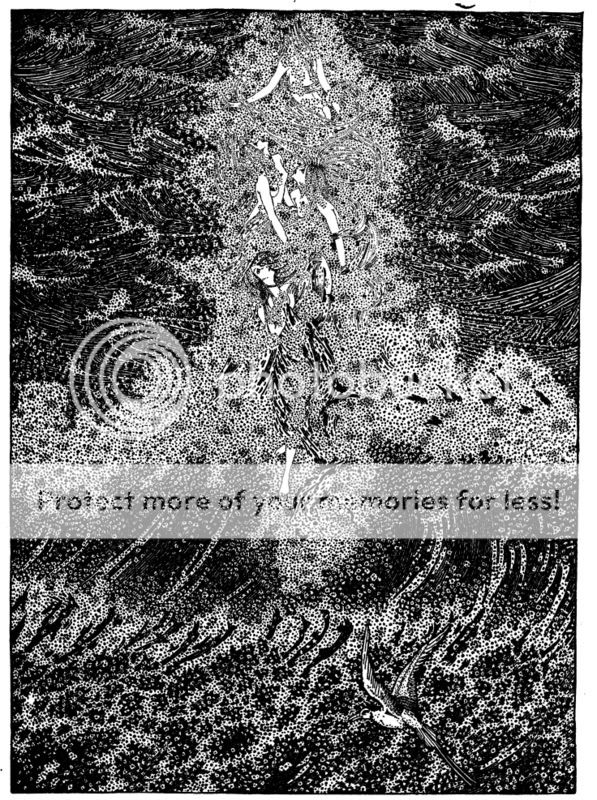
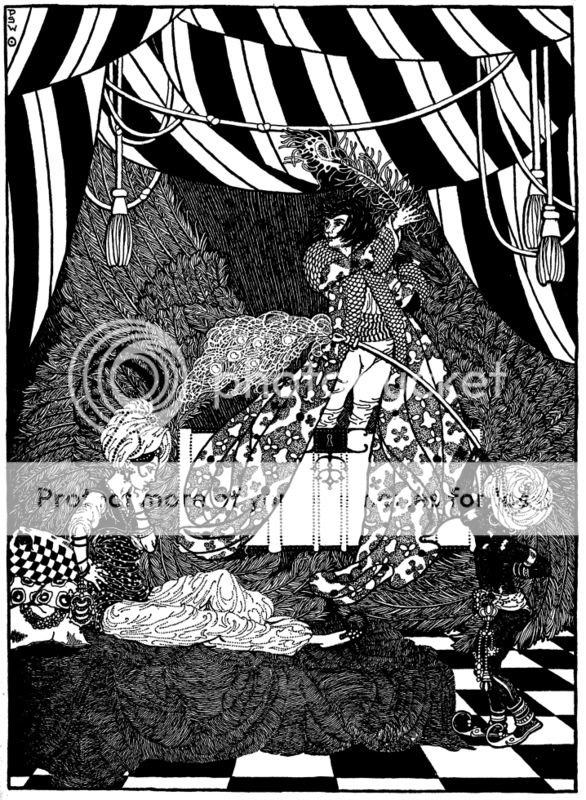
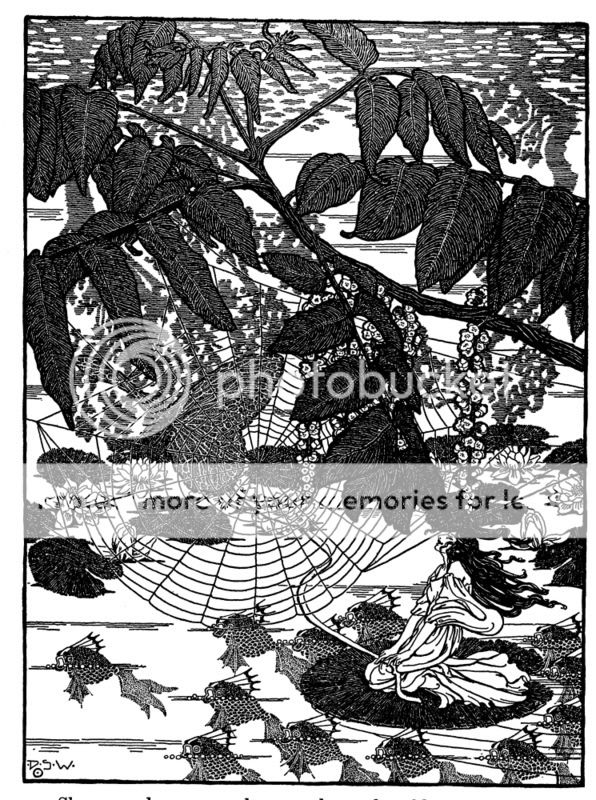
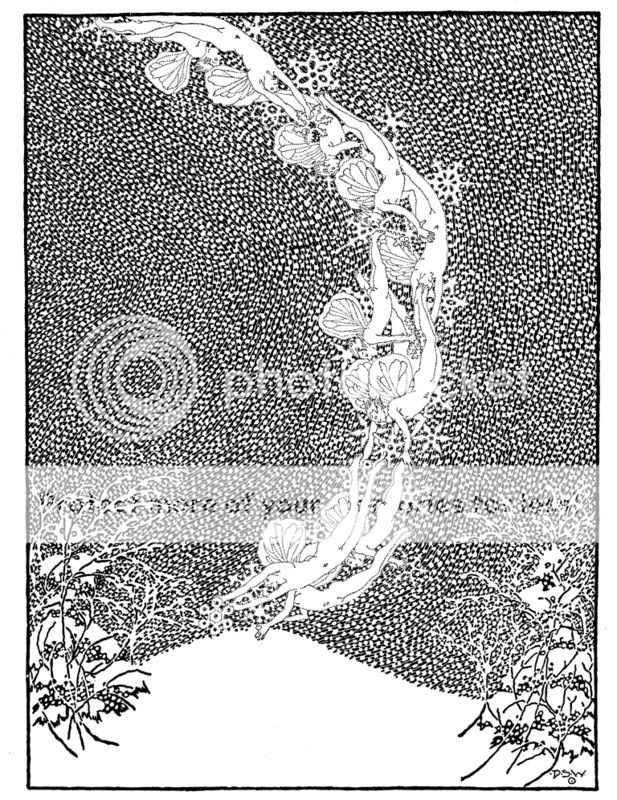

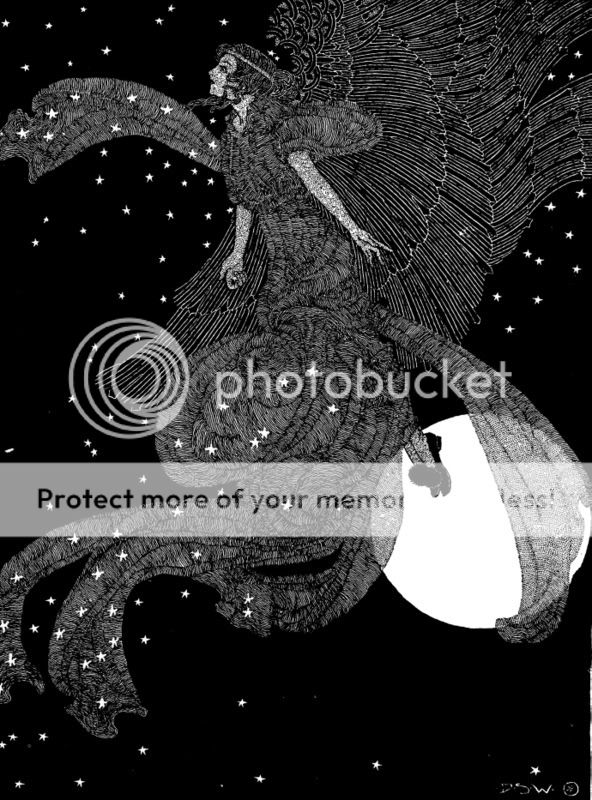
I enjoyed seeing the illustrations. Incredible color and design. I like reading about whatever you’re into–criticism, illustrations, whatever.
Thanks Teresa. I appreciate the vote of confidence!
Great post.
Being a printmaker interested in fairytales I can say that it is very hard to find scans of the lovely prints that illustrated fairytale books in the late 18–, early 19–. Those are mostly intaglios, but there are some great etchings. Thanks for sharing these illustrations.
Hey Leticia. You’ve seen the Sur La Lune site, right? If not, you’ve got to check it out – it has lots of amazing scans, as well as a ton of other information. It’s a fantastic resource.
so wonderful — thanks. some of his stuff reminds me of some of dorothy lathrop’s stuff.
Yes; there’s definitely a connection with Lathrop. I’d be surprised if she wasn’t familiar with his work (and maybe vice-versa, though I think she’s a little younger….)